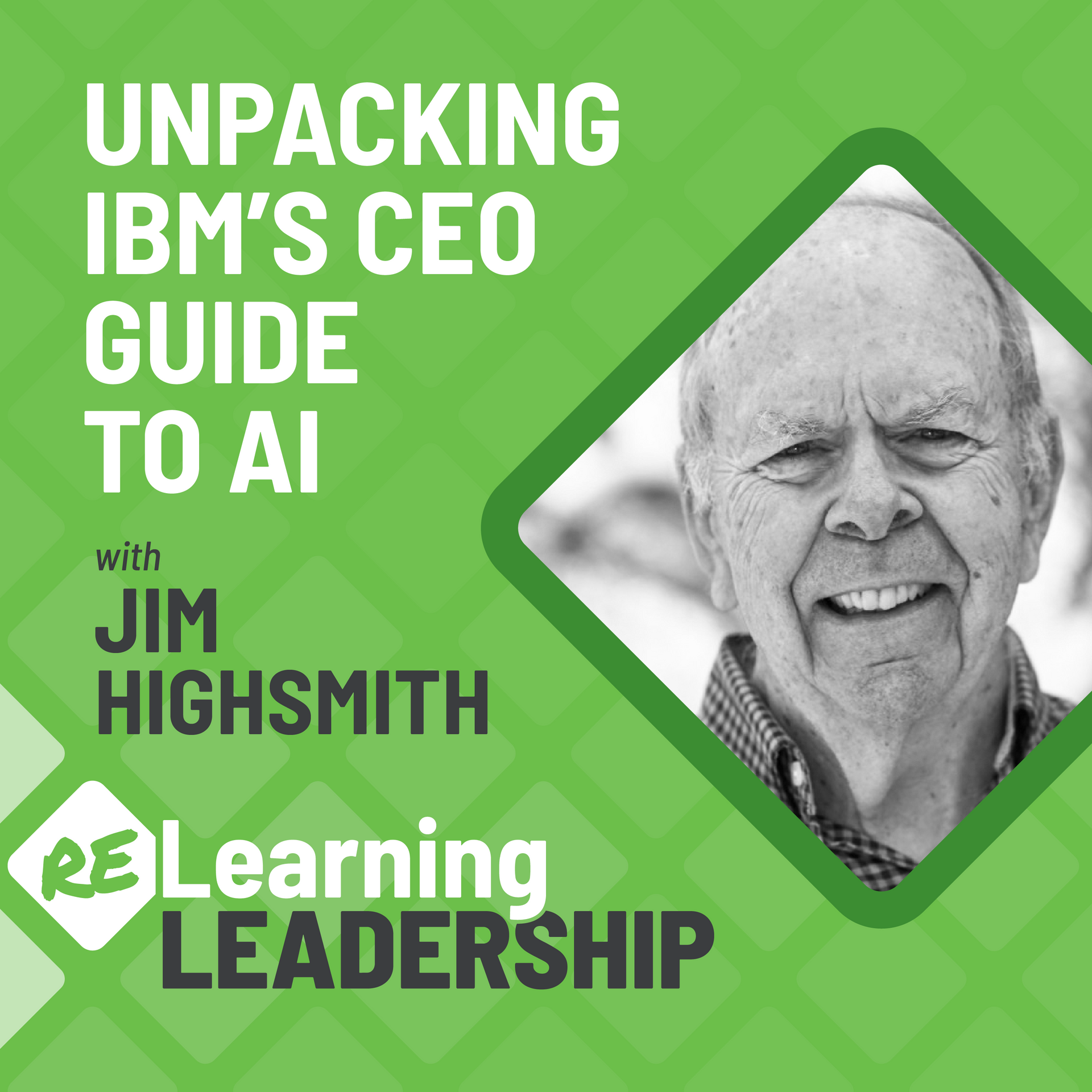29: How to Make Every Conversation Better Part 1: Navigating Threat
Is there a silver bullet to make every conversation better?
Yes, there is a silver bullet!
In the first of a 3-part series, Pete introduces the land mine ready to set off course virtually every meaningful conversation and how to navigate around it.
Intrigued?
(Re)Learning from this episode…
You cannot avoid threats. Our brain is a vast, yet sensitive organ that is easily triggered. In any interaction with others, understanding triggers in others and staying clear of them is admirable, but virtually impossible. In any meaningful conversation, threats will emerge.
Fight threats with rewards. Our brain biases toward threat. Scientists say threats are seven times more impactful than rewards. Even so, for every threat, there is an opposite reward that can counterbalance by delivering a hit of dopamine that tames the adrenaline.
Episode Transcript
Pete Behrens:
Is there a silver bullet to make any conversation a better conversation?
Welcome to another episode of Relearning Leadership, where we explore a specific leadership challenge and break it down to help improve your leadership, your organization, and possibly your personal life.
I’m Pete Behrens, and today I want to talk about the one way you can improve every conversation. Does that sound intriguing? Alright. Let’s dive in.
I want to start with two stories that, let’s just say, didn’t go so well. Two conversations that I had with my partner Jana that let’s not follow.
Conversation #1. One morning on a Saturday, I’m writing. In the flow, headphones on, working on some topic. Sure enough, Jana comes along and said, “Hey, Pete, gotta talk.” Of course, I’m interrupted. I’m bumped out of my flow of state, of writing. And I can imagine my response was probably not all that friendly. And within about 30 seconds, I think she said, “Fine. Forget it.” And I’m like, “Ugh!” Failure bow, right? Trying to recover from that was incredibly difficult.
Conversation #2. Let’s turn the tables. Now it’s my turn. I’m coming up to Jana. I’m offering a new idea. “Hey, this house is no longer serving us. I believe it’s time for us to move. Our boys have moved out. We’re using 20% of our house.” And boy, was I surprised. The alliteration of, “Woah, wait! What about our memories? What about our friends? We love living here. We just redid our kitchen.” All these things that were coming up, It was like, “Oh, my gosh.” Alright, I totally screwed that conversation up and obviously tripped over a wire on that one.
So, what’s going on in these two not-so-great moments with Pete and conversations with his partner, Jana? Well, what we’re dealing with here is the concept of threat. Okay. First of all, in both cases, we’ve got somebody who needs to talk and somebody who’s, for the most part, unsuspecting. This is the way a lot of conversations get kicked off. And if we’re just talking about the game last night or if we’re just talking about the weather, who cares? Let’s not work up a sweat over those things. But when something’s at stake, when there’s something important to talk about, when you’re dealing with emotions, when you’re dealing with our house—there’s a lot to it. And what I didn’t realize in the first conversation is that Jana wanted to talk about her mother and her mother’s resurgence of cancer. Yeah. That was that conversation. At work, this might be dealing with things like project decisions, changes. This might be dealing with reassignments and where things are going to be heavily involved. This decision has an impact! Those are the conversations in which we don’t want to have this response. What are we seeing here? We’re seeing threat.
So let’s talk about threat. Threat is that adrenaline hormone-inducing, get-the-heart-rate-going, get-the-lungs-pumping, fight, flight, or freeze response. That’s that defensiveness that we get when something is coming at us that we don’t expect.
In these two stories, we’re seeing a couple of things. Let’s take that first story. I’m surprised, right? I’m on a train. I’m in a flow. And what happens? I get pulled away from that. My brain is expecting something, and all of the sudden—[brake sound effect]. And it’s being pulled away. This is what we call a certainty threat. I had a certain expectation of what’s going on. Saturday morning, I don’t expect much to disrupt that, and all of the sudden, there it is, in front of me. There’s a second piece going on there: autonomy. I have no choice; this is happening to me. Jana wasn’t purposefully trying to break my flow. She didn’t know what I was doing. She just had a need; she needed to talk about something that was important to her at that moment. Yet, for me, that was a forced disruption. That’s like saying, “Nope! You’ve got to be over here.” And so autonomy is a clear trigger.
Now, turn the tables. Same thing’s happening to Jana. I surprised her with this conversation about a house. She’s like, “Woah! Where’s this coming from?” There’s a certainty element there, but let’s compound the certainty. Not only is this conversation uncertain, the entire path I’m projecting forward is uncertain. Sell this house? How? Where are we going to move? Where do we go to? Where are our friends? When you’re talking about change and uncertainty, it’s not only the conversation. It’s the implications of that conversation. And obviously—autonomy. I didn’t give her a choice of saying, “Hey, let’s talk about this right now!”
What we’re seeing are two elements of a framework that I want you to be aware of. This comes from David Rock, and it’s called SCARF. It comes from the book, Your Brain at Work, which you probably see on my shelf behind me. It’s an incredibly powerful recognition of the five key triggers we all—all humans—are going to create, this adrenaline-pumping threat. Let’s quickly review those.
- The S stands for Status. Status is probably my favorite threat. What is status? Status is something we compare to other people. I might be wealthier, healthier, taller, those types of things. Who am I as a person? Status is also my experience, my expertise, my authority. Do you question my decision? Are you saying I made a mistake? You think of all of those things that happen at work when somebody says, “Hey, I’m not so sure about that.” Or, “I don’t see things the same way.” Those are actually status threats. Our person, our being, our competency is being challenged.
- The C stands for Certainty. We talked about that one quite a bit. Think about that. Certainty is the threat of what I expect versus something new coming in. Think of covid! COVID was a huge certainty trigger. Not only for our health. Not only, “Hey, am I going to get it?, but “Are we going to return to work? What’s going to happen at work?”. Think about all the things that COVID did from a standpoint of certainty-types of triggers. And this is certainly one that comes up, obviously, at work, especially with agility, all the time.
- The A stands for Autonomy. We talked about that one. “Don’t tread on me! Give me my freedom! Give me choice!” Any time that we are pulled from what we want to do, we’re going to get triggered by an autonomous threat. “That is not somewhere I wanted to go!” This is true of any decisions that organizations make. This is happening all the time. Now, it might feel like micromanagement to you, or it might feel like somebody is treading on your turf, who does your work. Whatever that might be. That gets at status and autonomy, when somebody redoes your work or corrects your work. You can think how certainty and autonomy can play together as well. When something is uncertain, it often happens because of a lack of autonomy, like a choice in direction. All of the sudden: “Woah! It wasn’t my choice, and it’s uncertain”. These things combine together.
- The R stands for Relatedness. Relatedness is the connection to somebody else. If I didn’t have this with Jana—we’re quite connected! We’ve been together for a very long time. But think about what happens at work. Somebody makes decisions who is not in the project. “Wait a second! Why are they making this? They don’t understand what’s going on here. They’re not involved in the everyday action. How many times is there a lack of understanding? Why is HR making that policy? We’re different over here. They don’t understand us. Why did my boss make that decision? They’re not in the depths.” Relatedness is the lack of connection in context and understanding we have with those who might be interrupting us.
- And finally, the F stands for Fairness. Probably the one my partner, Jana, is most likely triggered on. Not only for her own experience of being treated unfairly, but actually when she sees someone else—women—getting treated unfairly, Black Lives Matter…it’s when that equity and equality are being challenged in a lot of ways. But this happens at work all the time. “It’s not fair! Our group is punished for this other group. We have to stay and work late, or we have to fix their problems. Things flow downstream.” Think about how fairness comes into play. Even “Why do they get the corner office?” Now you’re talking fairness and status. “Why do they get the parking spot?”
What we’re seeing here are these five key triggers.
So, the silver bullet to make every conversation better is to delay and/or avoid threat. Now, easier said than done, I know. But we actually have a little bit more at our disposal. There’s another little trick to this. The brain’s fascinating, in the fact that the brain has the adrenaline that pumps the heart and gets the lungs going on the fight, flight, or freeze. But you know what? The brain has another chemical, another hormone, called dopamine. And the dopamine is a counterforce. It’s like a counterpunch. Because for every one of these threats, there is a reward. We can give status. We can give certainty. We can give autonomy. We can give relatedness. We can give fairness. Each one of these giving—not taking! Giving creates dopamine. The feel-good, “Hey, I’m recognized! I’m heard. I’m treated fairly.” That actually produces a chemical.
The bad news is that the adrenaline always supersedes the dopamine. This was Darwin, this is survival of the fittest. The reason the adrenaline is stronger is because in the days of cave people, pretty much every one of these threats meant life was at risk. Whether it’s the uncertainty of a tiger in the forest, or the uncertainty of my status being challenged by a tribe member means I’m probably going to get killed. Or, “I don’t know this other tribe, so they’re probably going to kill me.” Those are the things that probably got us killed. The problem is our brains have not changed. We treat everyday threat on all five of these indicators as if our life is at stake. Our brains don’t differentiate, which is pretty sad. Granted, some of these could be life-threatening. Hopefully most of these threats you’re dealing with are not life-threatening and something you can work around.
So how do you give status? You give status by asking somebody their opinion. Respecting their experience, or even just giving credit to what they do.
What about certainty? It’s pretty easy. Ask if now is a good time. Be able to let them have some heads up. “Hey, this is going to be happening! Let’s talk about it.” Lay out a plan that gives people a little more understanding about what’s happening.
Autonomy? Simply give people choice: “Is now a good time, or maybe later?” That’s both certainty and autonomy. You’re giving them choice, flexibility. Allow them time to explore. “I’d like to hear some of your thoughts on that.” You’re showing status and some autonomy in having them think through some of these choices.
Relatedness? Well, be human! Treat people as human. Connect to people on a human level. Be human yourself. Show some vulnerability and some openness and some flexibility and that you’re not fixed on something.
And finally, fairness. Fairness is often felt when you give people a voice and you recognize and respect them and you give them some space and autonomy. But also, with fairness, just recognize some of your biases. Treat people with respect. Be kind. It’s being in that space of recognizing that equality doesn’t always mean equity, and vice versa. And what does that mean for different situations.
Back to our stories. We were able to recover; our marriage is still intact. And I’m proud of the fact that those illustrations of really poor examples—number one: I’m not immune to failure. But number two: we were able to recover. The conversation where I got threatened—within a couple minutes I went and said, “Okay, I apologize. I was in a flow state, and I didn’t recognize the importance of this conversation.” It required me to reset. It required me to come back to that table.
In the other one, it was almost the opposite. It, again, require her to step back and think. And sometimes time is a really valuable tool here. And her recognition that maybe she’s wrapping up a lot of threat that wasn’t really threat. She kind of rolled things together. “We’re still going to live in this town. We’re still going to be with our friends. Maybe this house could be a great house for another young family that wants to use it.” So being able to kind of step back from it—give her a little bit of space in order to process that—helped her come down from that threat position.
I encourage you to start to evaluate and start to look at your threats. Pay attention to some of your triggers. The first thing you have to do—the most important thing you have to do—is manage your own. If you go under threat, game over. It’s not going to go anywhere constructive. You can’t manage a conversation, you can’t manage an engagement, if you’re under threat. It’s just going to cycle down. Then, once you manage your reactions and move them more into responses and you manage those threat triggers—then you can start to deal and start to invoke and give out some of these rewards to others. You can be the catalyst for positive change versus the catalyst towards threat.
I wish you the best of luck in your upcoming conversations, and enjoy the journey!
Relearning Leadership is the official podcast of the Agile Leadership Journey. It’s hosted by me, Pete Behrens, with analysis from our global Guide community. It’s produced by Ryan Dugan. With music by Joy Zimmerman. If you loved listening to this podcast, please leave us a review. And visit our website,
relearningleadership.show, for guest profiles, episode references, transcripts and comments, and more. And to relearn more about your own leadership, visit us at
agileleadershipjourney.com.
Explore:
Recent Episodes









